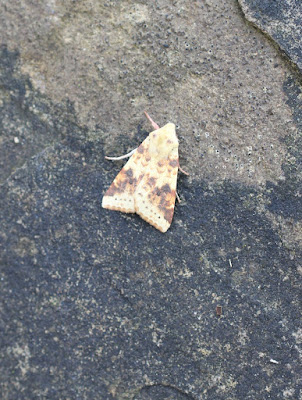 |
| Feathered Gothic (Tholera decimalis) |
 |
| Sallow (Xanthia icteritia) |
More than a hint of Autumn is carried on the wings of the Sallow (Xanthia icteritia) and this is the first of its kind this year. The moth is coloured so beautifully to disappear among the leaves - camouflaged and safe. The scientific name opens up a digression which is revealed here.
 |
| Gold Spot (Plusia festucae) |
There is the Gold Spot (Plusia festucae) and there is the Lempke's Gold Spot (Plusia putnami) and they are very similar. Reading the differences and variations that are visible on the moth's wings might seem to guarantee an identification - but then we learn that each variety will sometimes carry marks found on the other. I am pretty sure this is not Lempke's as the markings that look like a little keyboard have only one white key and not four. B J Lempke (1901-1993) was a Dutch lepidopterist whose name is now linked with this sub-species.
 |
| Magpie (Abraxas grossulariata) |
The final species from last night's trap - which had not a single micro moth to be found - is the Magpie. I always associate this moth with one that I saw as child. It was inside a greenhouse, in the garden of a dahlia grower in Bilborough, Notts. It was so bright and extraordinary I found it difficult to believe it was a moth. The scientific name is examined here.
